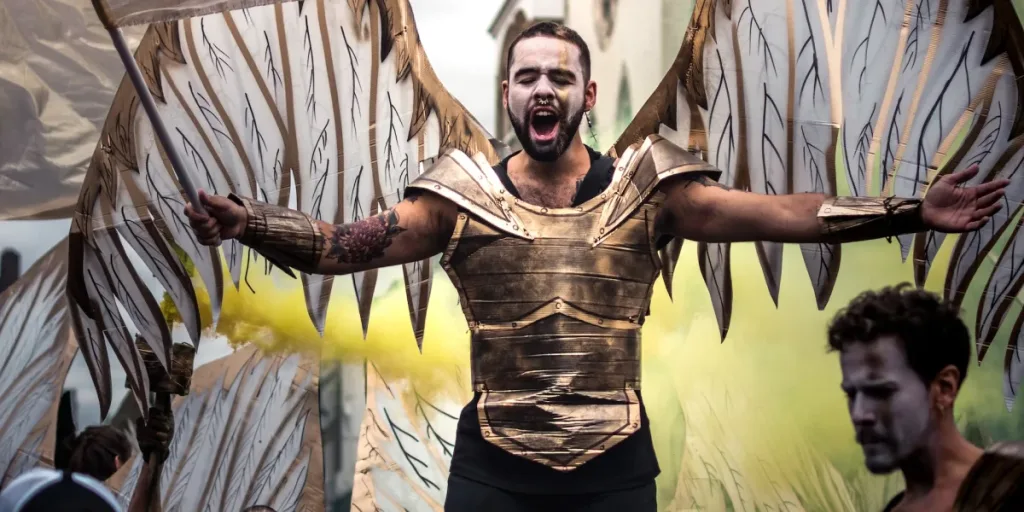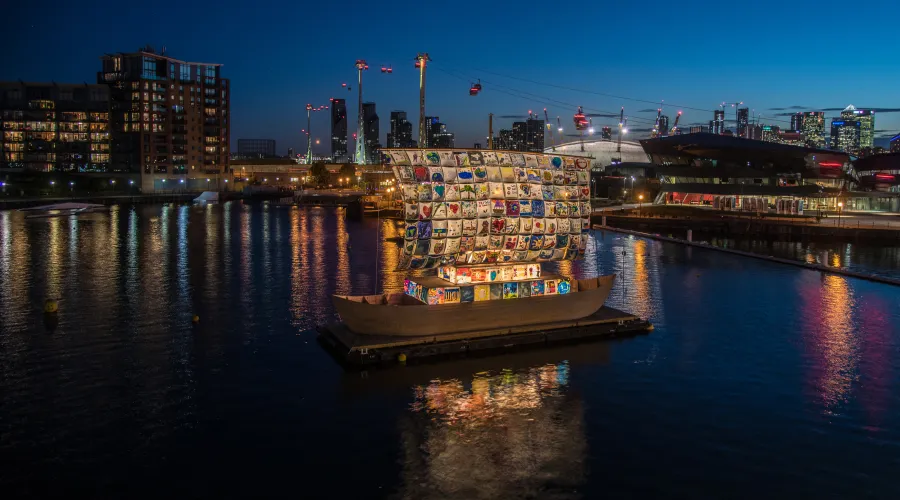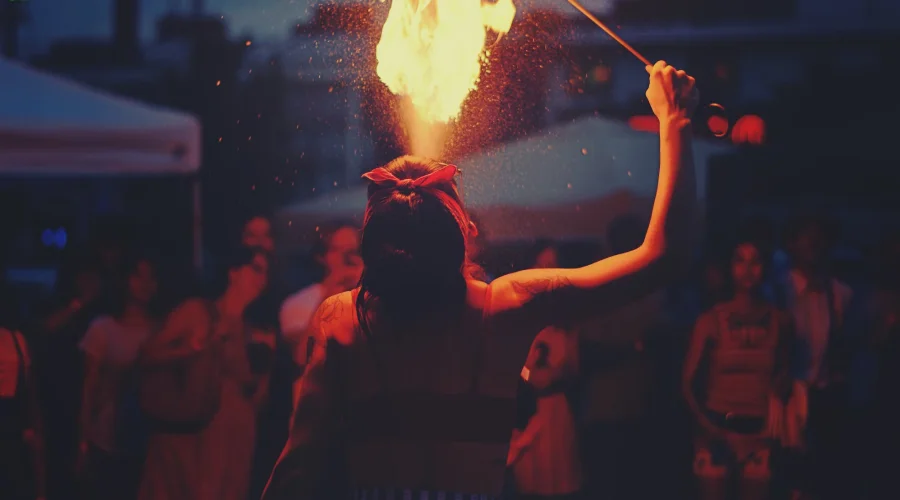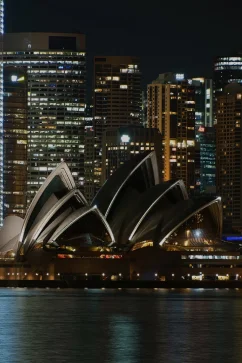Local Parties in London: A Vibrant Tapestry of Culture and Celebration

London, the cosmopolitan heart of the United Kingdom, is not only known for its iconic landmarks and rich history but also for its lively and diverse local party scene. The city’s neighborhoods come alive with a multitude of celebrations, festivals, and events that showcase the rich tapestry of cultures and communities that call London home. This report delves into the vibrant world of local parties in London, highlighting some of the most popular and culturally significant festivities that contribute to the city’s unique charm.
The Notting Hill Carnival
The Notting Hill Carnival, an annual event held in August, is one of London’s most iconic and celebrated local parties. This two-day Caribbean carnival has been a fixture in London since the 1960s and is a vibrant celebration of Caribbean culture. The streets of Notting Hill come alive with colorful costumes, steel drum music, and a dazzling display of dance. The carnival features a grand parade with impressive floats, delicious Caribbean cuisine, and a festive atmosphere that draws in people from all walks of life. It’s a testament to London’s inclusivity and the city’s ability to embrace and celebrate diversity.
Origins and History
The roots of the Notting Hill Carnival trace back to the mid-20th century when London saw an influx of Caribbean immigrants. These newcomers brought with them their vibrant traditions, music, and culinary delights, creating a thriving Caribbean community in the Notting Hill area. As a response to the racial tensions and discrimination of the time, the first carnival was organized in 1959 as a small procession through the neighborhood.
The event gained official recognition and evolved into the grand spectacle we know today, thanks to the efforts of activist and organizer Rhaune Laslett. In 1966, the carnival was held as a multicultural celebration aimed at promoting unity among diverse communities, making it an enduring symbol of London’s multiculturalism and inclusivity.
The Parade and the Mas Bands
At the heart of the Notting Hill Carnival is the grand parade. Colorfully adorned mas bands, short for “masquerade,” take to the streets, wearing elaborate costumes that tell stories, showcase themes, and reflect the rich cultural traditions of the Caribbean. Each year, the parade features a different theme, adding an element of surprise and creativity that keeps the carnival fresh and exciting.
The mas bands are accompanied by the pulsating rhythms of steel bands, calypso music, and the infectious beats of soca and reggae. The music is irresistible, and it fills the air with an energy that’s contagious. Dancers and revelers follow the bands, moving to the rhythm of the Caribbean, creating an atmosphere of pure celebration.
Food, Drink, and Cuisine
One of the highlights of the Notting Hill Carnival is the diverse and delectable Caribbean cuisine on offer. The streets are lined with food stalls and vendors serving up mouthwatering dishes like jerk chicken, roti, and curried goat. The scent of grilling meat and the sizzle of frying fish fill the air, tempting the taste buds of carnival-goers.
To wash down these spicy delights, you can sample tropical cocktails, such as the famous rum punch, and cooling beverages like coconut water straight from the shell. The culinary experience at the carnival is a testament to the Caribbean’s rich and flavorful gastronomy.
Community and Culture
The Notting Hill Carnival is not just a display of Caribbean culture; it’s a celebration of London’s multicultural identity. The event brings together people from all walks of life, transcending boundaries and fostering unity among diverse communities. It is a showcase of the power of cultural expression to bridge gaps and create understanding.
In conclusion, the Notting Hill Carnival is a vivacious celebration that pays homage to the Caribbean community’s heritage and London’s cultural diversity. It’s a testament to the city’s inclusivity and its ability to embrace and celebrate different cultures. With its vivid parades, infectious music, mouthwatering cuisine, and a sense of unity and belonging, the Notting Hill Carnival is a truly unmissable event that offers a unique window into the rich tapestry of cultures that make up London. It is a vibrant and unforgettable celebration of Caribbean culture that leaves a lasting impression on all who have the privilege of attending.
Diwali in London
London’s multicultural makeup is beautifully exemplified in the celebration of Diwali, the Hindu festival of lights. Taking place in Trafalgar Square and other locations, Diwali in London is a joyous and colorful event. The festivities include traditional Indian music, dance performances, and the lighting of thousands of lamps, creating a mesmerizing spectacle. Families, both from the Indian diaspora and local communities, come together to celebrate this ancient festival, making it a beautiful symbol of unity and cultural appreciation.
Origins and Significance
Diwali, originating from the Sanskrit word “Deepavali,” means a row of lamps. The festival holds deep religious and cultural significance for Hindus, Jains, Sikhs, and some Buddhists. It symbolizes the triumph of light over darkness, good over evil, and knowledge over ignorance. Diwali typically lasts five days and is marked by various rituals, including the lighting of oil lamps or diyas, the exchange of gifts, and the preparation of festive sweets and savories.
In London, the festival takes on a broader cultural significance as it is celebrated not only by the Indian community but also by people from various backgrounds who come together to celebrate diversity and unity. It has become a symbol of London’s multiculturalism and its ability to embrace different cultures.
The Celebrations
Diwali in London is celebrated with great enthusiasm and vigor. One of the most iconic and vibrant celebrations takes place in Trafalgar Square. The square is adorned with traditional Indian decorations, including colorful rangoli designs made from colored powders and flowers. These intricate patterns serve as a welcoming path for festival-goers.
The festivities typically include live music and dance performances, with classical and contemporary Indian music filling the air. Dance troupes showcase traditional dances like Bharatanatyam and Kathak, while modern Bollywood dance performances add a contemporary twist to the celebration. The combination of music and dance creates a lively and joyous atmosphere that is infectious.
A central aspect of Diwali celebrations is the lighting of thousands of lamps and candles. This collective illumination serves as a symbolic gesture of dispelling darkness and ignorance. The sight of Trafalgar Square aglow with the warm light of countless lamps is truly magical and moving. The event also features a wide array of Indian food stalls, offering everything from samosas and pakoras to sweets like jalebi and gulab jamun. The tantalizing aromas and flavors of Indian cuisine add a delicious dimension to the festivities.
The Celebrations
Diwali in London is more than just a cultural celebration; it is an expression of unity and community. People from various backgrounds come together to share in the joy of the festival, to learn about Indian traditions, and to appreciate the values of light, knowledge, and togetherness.
In conclusion, Diwali in London is a festival of lights, culture, and unity. It embodies the multicultural spirit of the city, welcoming people from all walks of life to come together and celebrate. The vibrant celebrations in Trafalgar Square and other locations in the city serve as a testament to London’s ability to embrace and celebrate different cultures and traditions. Diwali in London is a beautiful reflection of the power of cultural expression to bridge gaps, create understanding, and bring people together in a celebration of diversity and unity. It is a festival that not only lights up the night but also warms the hearts of all who participate.

The Thames Festival
The Thames Festival, held annually in September, is a celebration of London’s iconic river. This two-day event transforms the banks of the Thames into a bustling hub of creativity and culture. Visitors can enjoy a variety of performances, art installations, and activities that highlight the river’s historical and contemporary significance. It’s a fantastic local party that brings together art, music, and the river’s vibrant heritage.
Origins and History
The Thames Festival was first established in 1997, born out of the desire to reconnect Londoners with the River Thames and showcase the river’s historical and contemporary importance to the city. Over the years, the festival has grown into a significant event that attracts hundreds of thousands of attendees, making it one of the city’s major cultural celebrations.
Key Attractions
The Thames Festival offers a diverse range of attractions that celebrate the river and its impact on London’s history and culture:
- Illuminated Night Carnival: One of the festival’s highlights is the Illuminated Night Carnival, a spectacular parade of illuminated floats, dancers, and performers that winds its way along Victoria Embankment and Southbank. This vibrant procession creates a breathtaking spectacle, lighting up the night with an array of colors and artistic performances.
- River Arts and Installations: Art installations and exhibitions are an integral part of the festival, showcasing the river’s influence on London’s artistic landscape. The riverbanks come alive with sculptures, light displays, and visual arts that draw inspiration from the Thames.
- Music and Performance: The festival boasts a diverse lineup of live music and performance acts, catering to various tastes and genres. From classical and world music to contemporary pop and rock, the musical performances provide a sensory feast for attendees.
- River Market: The River Market is a culinary paradise, featuring a wide variety of international food stalls and pop-up restaurants. Festival-goers can savor delectable dishes from all corners of the world, including local specialties and global cuisine.
- River Activities: The Thames River, being at the heart of the festival, offers a range of activities, including boat rides, dragon boat races, and water-based performances. These activities provide a unique perspective of the river and its significance in London’s history.
- Children’s Activities: The Thames Festival is a family-friendly event, with a dedicated area for children. It offers interactive workshops, storytelling sessions, and creative activities that engage young minds and make the festival an enjoyable experience for all ages.
Cultural Significance
The Thames Festival not only celebrates the River Thames but also serves as a reminder of the city’s historical roots and its continuous evolution. It promotes an appreciation for London’s artistic and cultural heritage and its global interconnectedness. The event symbolizes the city’s embrace of its river and its ability to adapt and transform while preserving its historical identity.
The Thames Festival is a vibrant and diverse celebration of London’s historic river. It offers a unique blend of art, culture, music, and history, making it a cultural gem in the city’s calendar of events. As an annual tribute to the River Thames, the festival embodies the dynamic spirit of London, its ability to adapt, and its commitment to celebrating its heritage while embracing the contemporary. For both locals and visitors, the Thames Festival is a magnificent showcase of London’s deep connection to its river and the cultural riches that it has nurtured over centuries. It is an event that unites the city, reminding everyone of the vital role the Thames plays in the life of London.

London Pride
London Pride, one of the world’s largest LGBTQ+ pride festivals, is a celebration of diversity and inclusivity. Held every summer, it features a colorful and exuberant parade that winds its way through the city, showcasing the LGBTQ+ community’s achievements and struggles. The event is not only a lively party but also a platform for advocating for LGBTQ+ rights and fostering a sense of belonging and acceptance.
Origins and History
The roots of London Pride can be traced back to the early 1970s when a series of protests and demonstrations took place in London, mirroring the broader global LGBTQ+ rights movement. These events, including the first official London Gay Pride Rally in 1972, sought to raise awareness and campaign for LGBTQ+ rights. Over time, what began as a political rally evolved into a joyous and unapologetic celebration of LGBTQ+ identities and love.
Key Attractions
London Pride is a dynamic and inclusive festival that offers a wide range of attractions and activities:
- The Parade: The heart of London Pride is the Pride Parade, a colorful and vibrant procession of LGBTQ+ individuals and allies. The parade features themed floats, marching bands, and participants dressed in creative and expressive attire, making it a lively and festive spectacle.
- Music and Performances: London Pride hosts live music performances by both renowned artists and up-and-coming talents. Music stages showcase diverse genres, from pop and rock to electronic and dance, with artists who have a significant LGBTQ+ following.
- Community Stalls and Information: The festival includes community stalls representing LGBTQ+ organizations, support networks, and charities. These booths provide valuable information and resources, encouraging engagement and education about LGBTQ+ issues.
- Family Area: London Pride is an inclusive event for all ages. The family area offers child-friendly activities, entertainment, and resources for LGBTQ+ families and their allies.
- Party Events: In the evening, the festivities continue with a wide range of parties, club events, and after-parties throughout the city, allowing attendees to celebrate late into the night.
Significance and Impact
London Pride holds immense significance as an affirmation of LGBTQ+ rights, visibility, and unity. It is a powerful platform for advocacy and social change, advocating for the equal rights and acceptance of LGBTQ+ individuals. Beyond its political importance, the festival creates a safe and accepting space for LGBTQ+ people to express their authentic selves, feel proud of their identities, and celebrate their love openly. London Pride is also a reminder of the city’s diversity and inclusive spirit, reflecting London’s role as a welcoming and accepting place for people from all walks of life, regardless of their sexual orientation or gender identity.
London Pride is a spirited and essential celebration of LGBTQ+ diversity, unity, and equality. It has evolved from its early days of activism into a global phenomenon that welcomes thousands of people from all backgrounds to join in the festivities. The festival is a vital reminder of the progress made in LGBTQ+ rights and a call for further acceptance and inclusivity. As a colorful and lively event, London Pride not only celebrates love and identity but also stands as a testament to the power of unity, equality, and the beauty of embracing one’s true self.

Bonfire Night Celebrations
The 5th of November marks Guy Fawkes Night, also known as Bonfire Night, and London hosts spectacular fireworks displays across the city. Local parties and events gather families and friends to commemorate the failed Gunpowder Plot of 1605, featuring bonfires, fireworks, and the traditional “Guy” effigy. The celebrations are a fun and communal way for Londoners to come together, enjoying the warmth of the bonfires and the dazzling lights in the night sky.
Historical Origins
The roots of Bonfire Night trace back to a plot to assassinate King James I and the members of the English Parliament. The conspiracy, known as the Gunpowder Plot, was led by a group of Catholic conspirators who aimed to overthrow the Protestant monarchy and establish Catholic rule. Their plan involved storing barrels of gunpowder beneath the House of Lords.
The plot was foiled on the night of November 5, 1605, when Guy Fawkes was discovered guarding the barrels of gunpowder. He was arrested, and the plot was exposed. The event led to the tradition of celebrating the monarch’s survival with bonfires and fireworks, initially as an expression of loyalty to the crown and gratitude for the safety of the king.
Key Customs and Celebrations
- Bonfires: The lighting of bonfires is a central aspect of the celebration. These roaring fires symbolize the thwarted gunpowder plot and serve as a visual representation of the threat that was averted. In some areas, effigies of Guy Fawkes are placed on top of the bonfires before they are set ablaze.
- Fireworks: The night sky is illuminated with dazzling fireworks displays. These vibrant explosions of color and light are both a form of celebration and a reminder of the explosives that were intended to be used in the plot.
- Effigies and “Guys: Traditionally, children create effigies of Guy Fawkes, often referred to as “Guys,” and display them in the streets. These effigies are a part of the custom, and children ask for “a penny for the Guy” to fund their own fireworks.
- Food and Drink: The celebrations often include food and drink stalls offering traditional fare such as toffee apples, bonfire toffee, and hot drinks like mulled wine. These treats add to the festive atmosphere of the evening.
- Community Gatherings: Bonfire Night is a communal event, with people coming together to enjoy the bonfires and fireworks. It is a time for socializing and sharing the spirit of the occasion with friends and neighbors.
Significance and Modern Interpretation
Today, Bonfire Night celebrations are less about expressing loyalty to the crown and more about the enjoyment of fireworks and bonfires. The event has evolved into a family-friendly occasion that unites communities, allowing people to come together in a spirit of fun and togetherness.
For many, Bonfire Night serves as a way to remember a critical moment in British history when a plot against the government was averted. It is also an opportunity to savor the chilly autumn weather, indulge in traditional treats, and enjoy the beautiful displays of light and color that light up the night sky.
In conclusion, Bonfire Night celebrations are a distinctive and lively British tradition that commemorates a historical event while providing a unique opportunity for communal gatherings, vibrant displays, and the enjoyment of delicious seasonal food. The festivity captures the essence of autumn in the United Kingdom and continues to be a beloved and cherished cultural tradition.

Conclusion
London’s local parties serve as a testament to the city’s unwavering commitment to inclusivity, diversity, and its celebration of the richness that arises from the harmonious coexistence of cultures. These celebrations, far from being mere events, are vibrant tapestries woven from the threads of different traditions, histories, and stories that make up the cosmopolitan mosaic of London.These local parties are more than just festivals; they are opportunities for Londoners and visitors to bridge gaps, foster connections, and build bridges of understanding. They serve as communal spaces where people from all backgrounds, beliefs, and identities can come together, creating an atmosphere of unity and shared experiences. In a world that sometimes seems divided, these celebrations stand as beacons of hope, demonstrating that when people celebrate together, they can understand and appreciate one another better.









